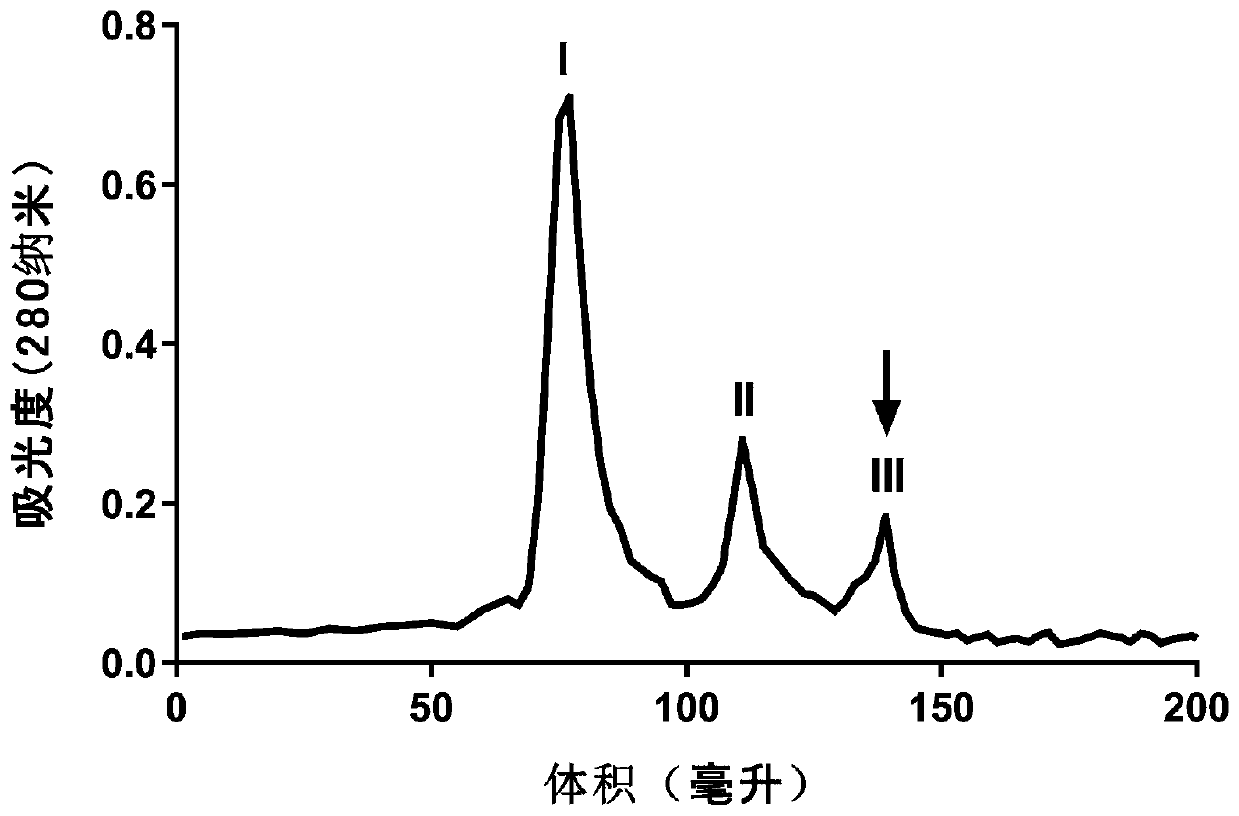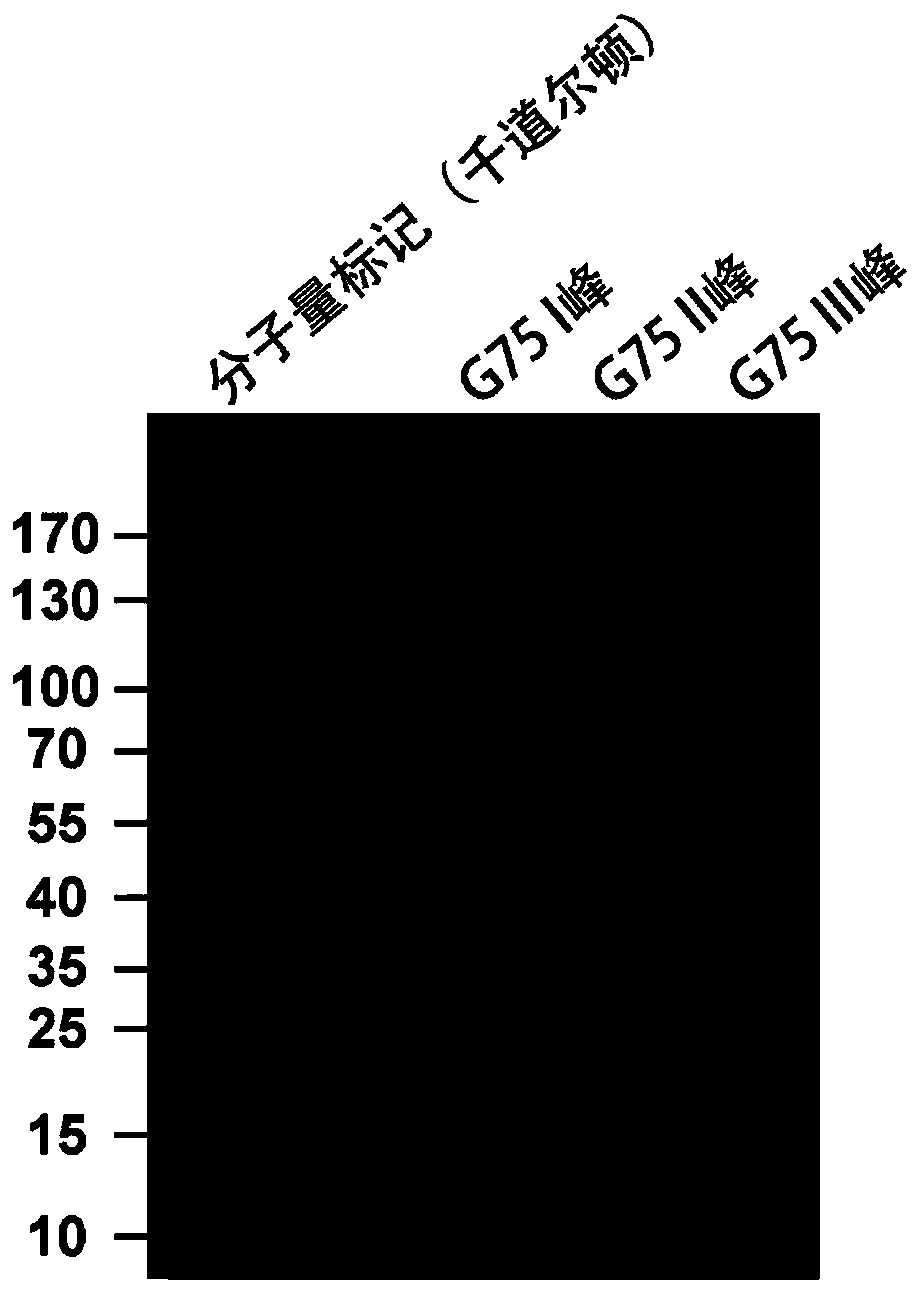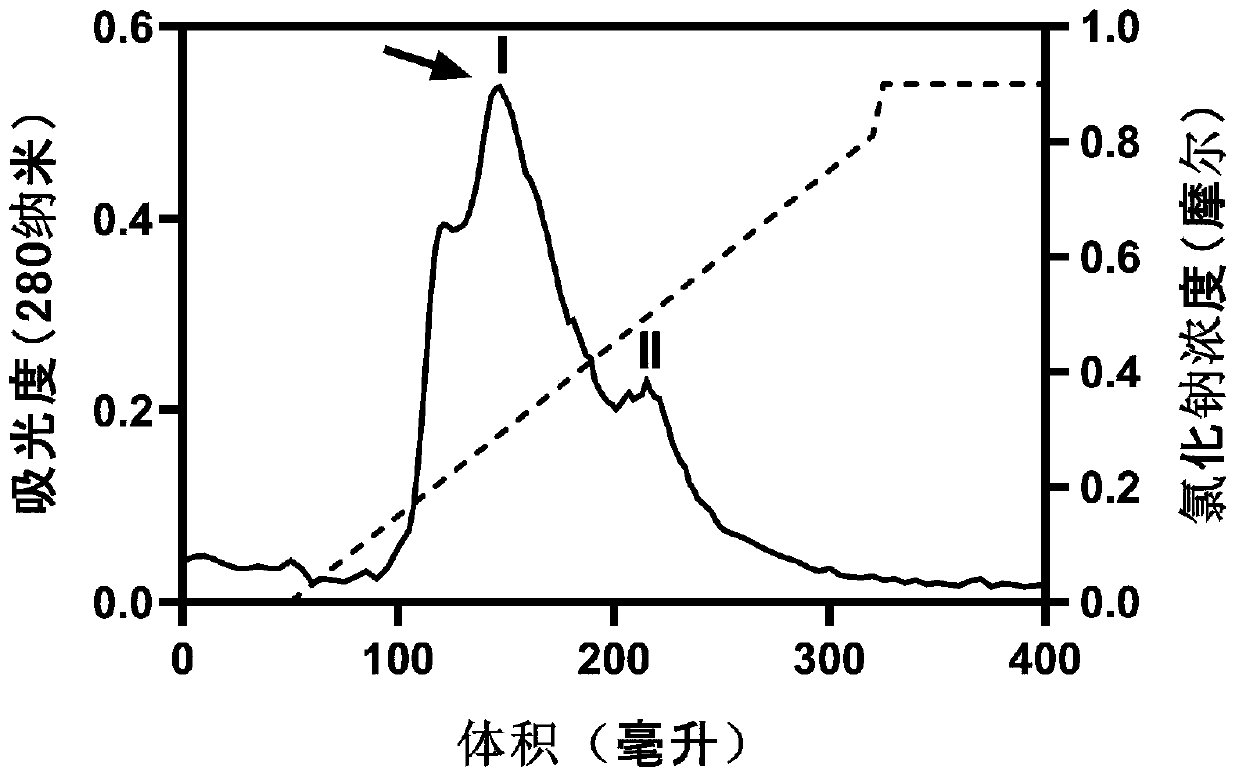Application of natural acid glycolipid molecules in neutralizing clostridium perfringens Epsilon toxin
A Clostridium perfringens, acidic technology, applied in the field of biomedicine, to achieve good neutralization ability, good neutralization effect, and prolong survival rate
- Summary
- Abstract
- Description
- Claims
- Application Information
AI Technical Summary
Problems solved by technology
Method used
Image
Examples
Embodiment 1
[0029] Example 1: Isolation, purification and identification of Clostridium perfringens (NCTC 8346) Epsilon toxin
[0030] 1. Culture of Clostridium perfringens and collection of supernatant
[0031] Clostridium perfringens (NCTC 8346) was purchased from the British Culture Collection of Microorganisms. First, a few colonies were taken with a sterilized inoculation loop and inoculated into 5ml of sterilized thioglycollate broth (1L formula needs to add Tryptone 15g, yeast extract 5g, L-cystine 0.5g, sodium thioglycolate 0.5g, sodium chloride 2.5g, glucose 5.5g, pH7.1), placed in a shaker at 37°C overnight; Inoculate 5ml of the initial culture into 100ml of TGY medium (containing 3% soybean trypsin broth, 2% glucose, 1% yeast extract, 0.1% sodium thioglycolate), and culture it anaerobically at 37°C for 16-18h , inoculate it into 3.5L of freshly prepared TGY medium, and continue culturing at 37°C for 12h. Centrifuge at 8000rpm / min for 20min to collect the culture supernatant. ...
Embodiment 2
[0041] Example 2: Screening of three types of acidic glycolipid molecules with neutralizing ability to Epsilon toxin toxicity and verification of neutralizing ability
[0042] 1. Enzyme cleavage and activation of Epsilon protoxin
[0043] The prerequisite for the Epsilon toxin to play a toxic role is that the Epsilon protoxin should be cleaved by trypsin to become an active Epsilon toxin. Therefore, before studying the neutralizing activity of acidic glycolipid molecules on the toxicity of Epsilon toxin, trypsin digestion of Epsilon protoxin was carried out first. Specifically, 1 μg of Epsilon protoxin corresponds to 12.5 μg of trypsin. After mixing, place it at 37°C for 1 hour , followed by adding a trypsin inhibitor to stop the activity of trypsin. Therefore, in subsequent activity experiments, the Epsilon toxin / trypsin / trypsin inhibitor mixture was used to represent the Epsilon toxin, and the trypsin / trypsin inhibitor mixture was used as a control.
[0044] 2. Screening o...
Embodiment 3
[0052] Embodiment 3: Ganglioside, sulfatide and sialic acid are to the protective effect of mice after Epsilon toxin infection
[0053] As mentioned above, gangliosides, sulfatides, and sialic acid can all effectively inhibit and neutralize the toxicity of Epsilon toxin in vitro experiments. It is speculated that these three types of acidic glycolipid molecules are expected to be good antidotes for bacterial lethal toxins . In order to verify this speculation, we intend to conduct research on the protective effect of these three types of acidic glycolipid molecules on animals infected with Epsilon toxin at the level of animals. The specific experimental design is as follows:
[0054]For the experimental animals, 48 C57BL / 6J adult male mice with a body weight of 20±2g were randomly divided into 6 groups with 8 mice in each group. Water feeding; (2) Epsilon toxin treatment group, mice in this group are given Epsilon toxin enema stimulation every day according to the dose of 5...
PUM
 Login to View More
Login to View More Abstract
Description
Claims
Application Information
 Login to View More
Login to View More - R&D
- Intellectual Property
- Life Sciences
- Materials
- Tech Scout
- Unparalleled Data Quality
- Higher Quality Content
- 60% Fewer Hallucinations
Browse by: Latest US Patents, China's latest patents, Technical Efficacy Thesaurus, Application Domain, Technology Topic, Popular Technical Reports.
© 2025 PatSnap. All rights reserved.Legal|Privacy policy|Modern Slavery Act Transparency Statement|Sitemap|About US| Contact US: help@patsnap.com



